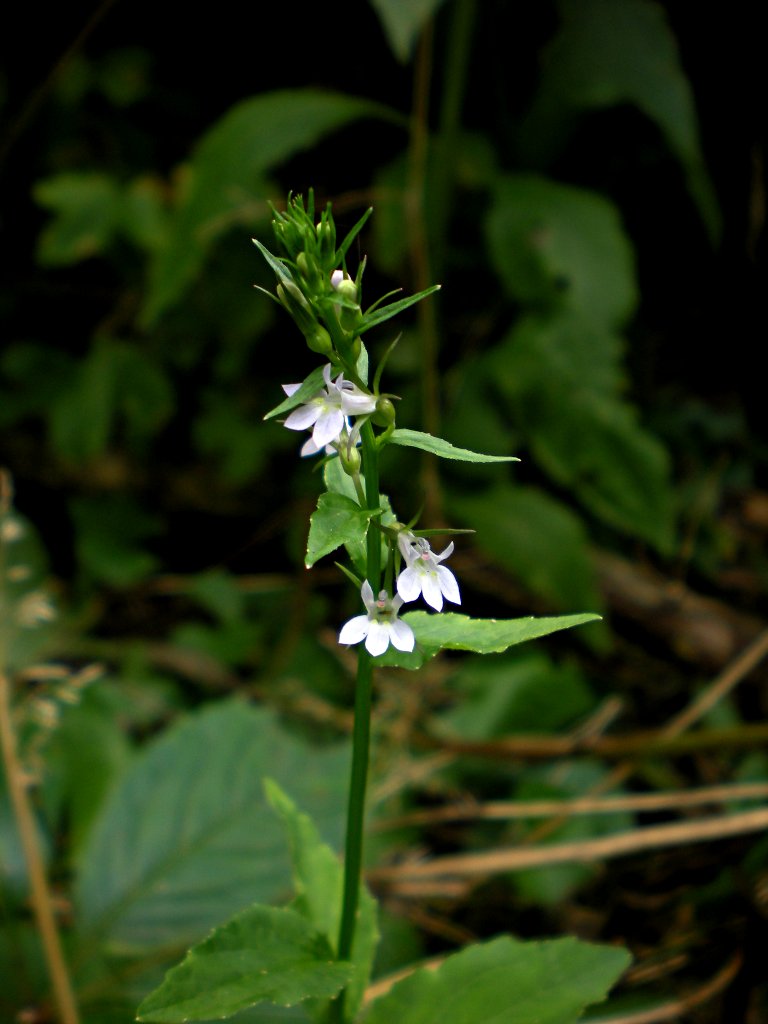

This is by far our most common Lobelia, a close
relative both of the little blue Lobelias that dangle
from our hanging baskets and the stately Cardinal
Flowers that adorn our perennial gardens. It likes an
open woodland or the shady margin of a meadow, but it
will also spring up in the middle of a sunny lawn
given half a chance. The flowers are pale blue, often
almost white. The species name inflata refers
to the puffed-up seedpods that develop after the
flowers.
The plant in this picture was blooming in early August
in a shady lawn in Mount Lebanon.
The name “Indian Tobacco” comes from the fact that
certain Indian tribes smoked the stuff, in which
practice they were imitated by some of the English
colonists. All accounts say the taste and stench are
at least as foul as those of real tobacco. It is, as
Gray points out, poisonous, and regrettably still “a
noted quack medicine” today, although there may be
medically useful chemistry in the plant as well.
Lobelias are placed in their own family Lobeliaceae by
Gray, but most modern botanists place them in the
family Campanulaceae, the Bellflower Family, often as
a subfamily called Lobelioideae.

Gray describes the genus and the species:
LOBELIA [Plumier] L. Calyx 6-cleft, with a short tube.
Corolla with a straight tube split down on the
(apparently) upper side, somewhat 2-lipped; the upper
lip of 2 rather erect lobes, the lower lip spreading
and 3-cleft. Two of the anthers in our species bearded
at the top. Pod 2-celled, many-seeded, opening at the
top. — Flowers axillary or chiefly in bracted racemes;
in summer and early autumn. (Dedicated to Matthias
de l’Obel, an early Flemish herbalist.)
Flowers blue, or blue variegated with white.
Flowers smaller (corolla-tube not more than 4-8 mm.
long).
Stem leafy, often paniculately branched; flowers
loosely racemose; sinuses of calyx not appendaged;
annual or biennial.
Leaves ovate or oblong, obtusely toothed; pod
inflated, wholly inferior.
L. inflàta L. (INDIAN TOBACCO.) Stems
paniculately much branched from an annual root,
pubescent with spreading hairs, 3-8 dm. high; leaves
gradually diminishing into leaf-like bracts, which
exceed the lower short-pediceled flowers; calyx-tube
ovoid; corolla only 3-4 mm. long. — Dry open fields
and thickets. — Plant poisonous and a noted quack
medicine.
